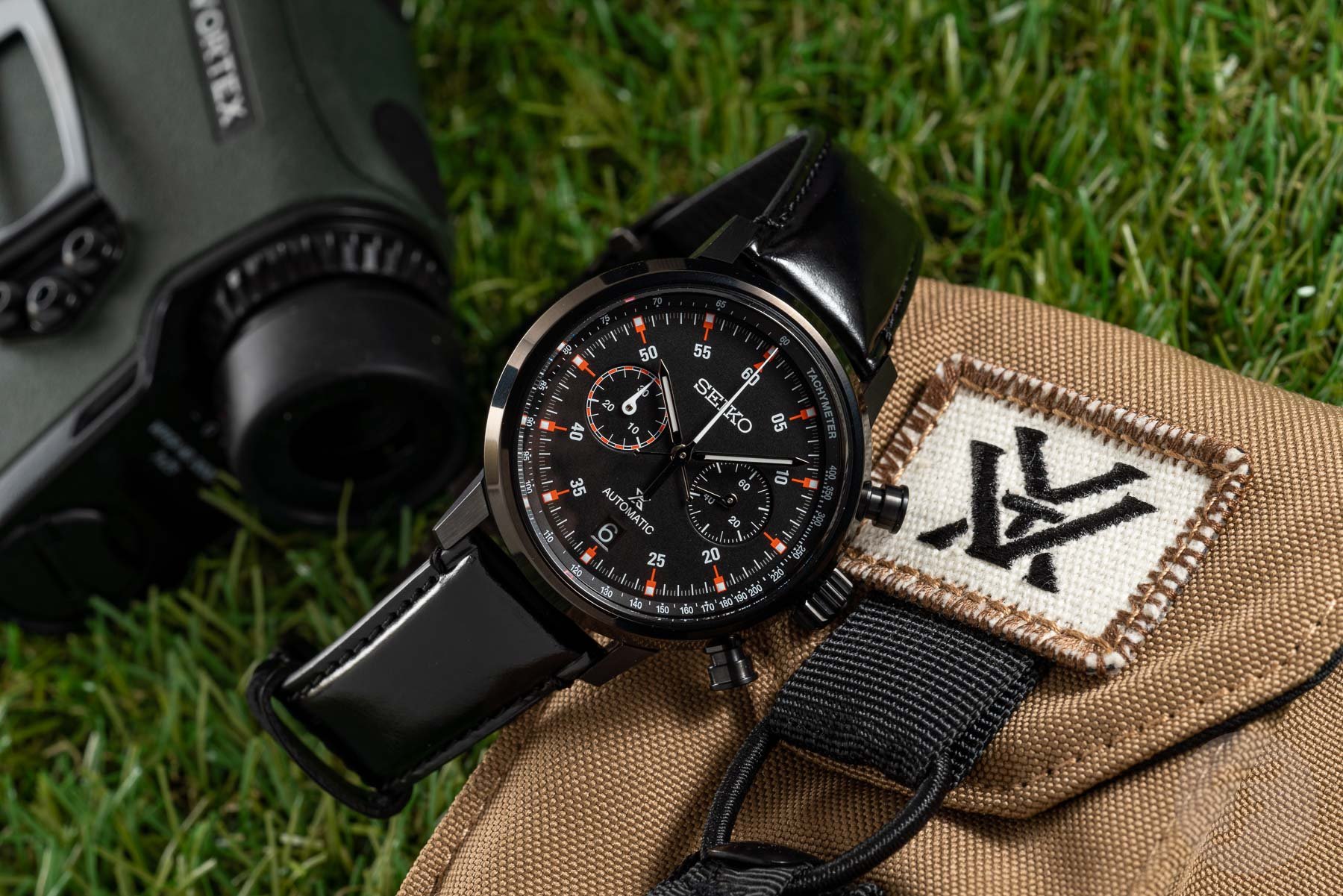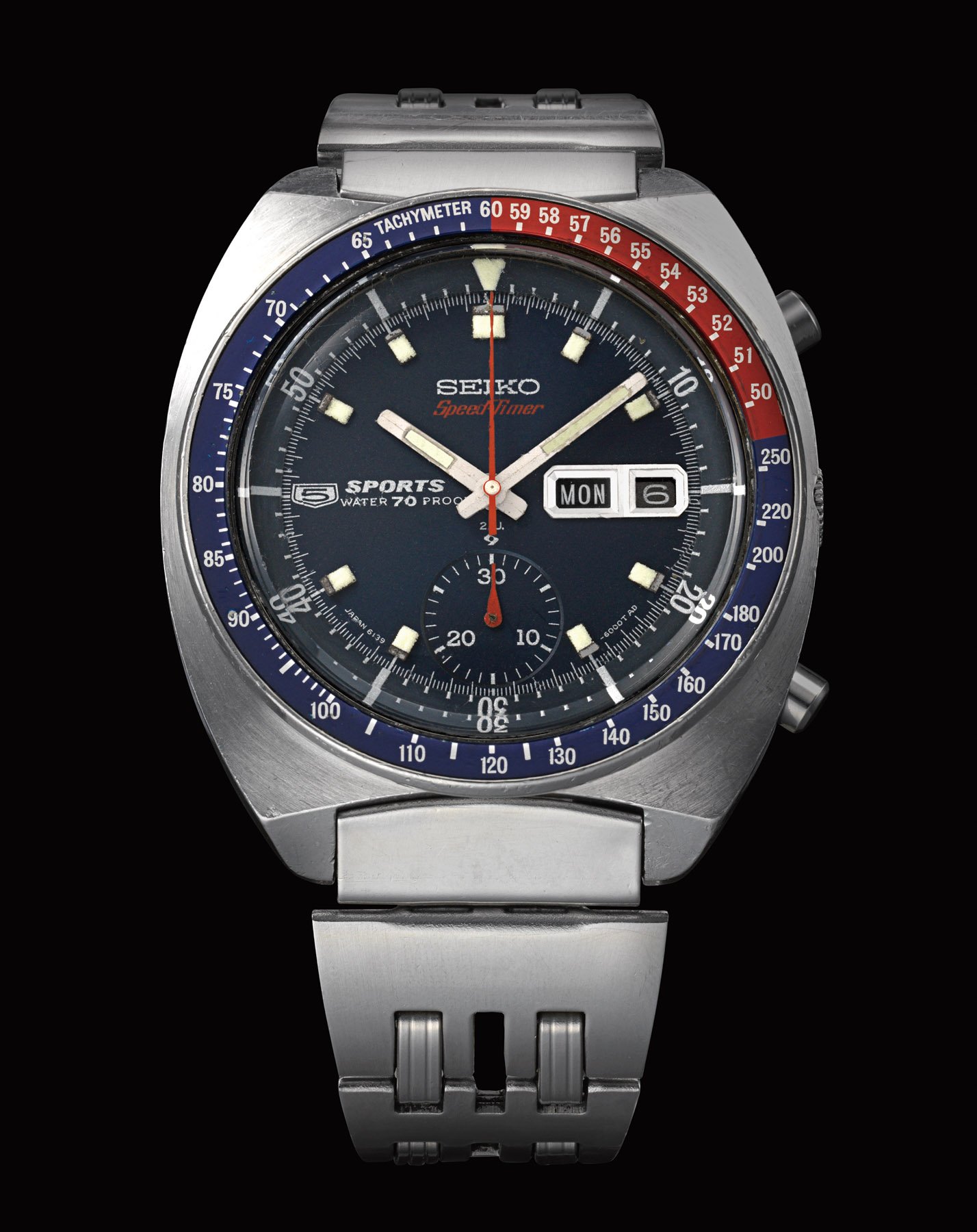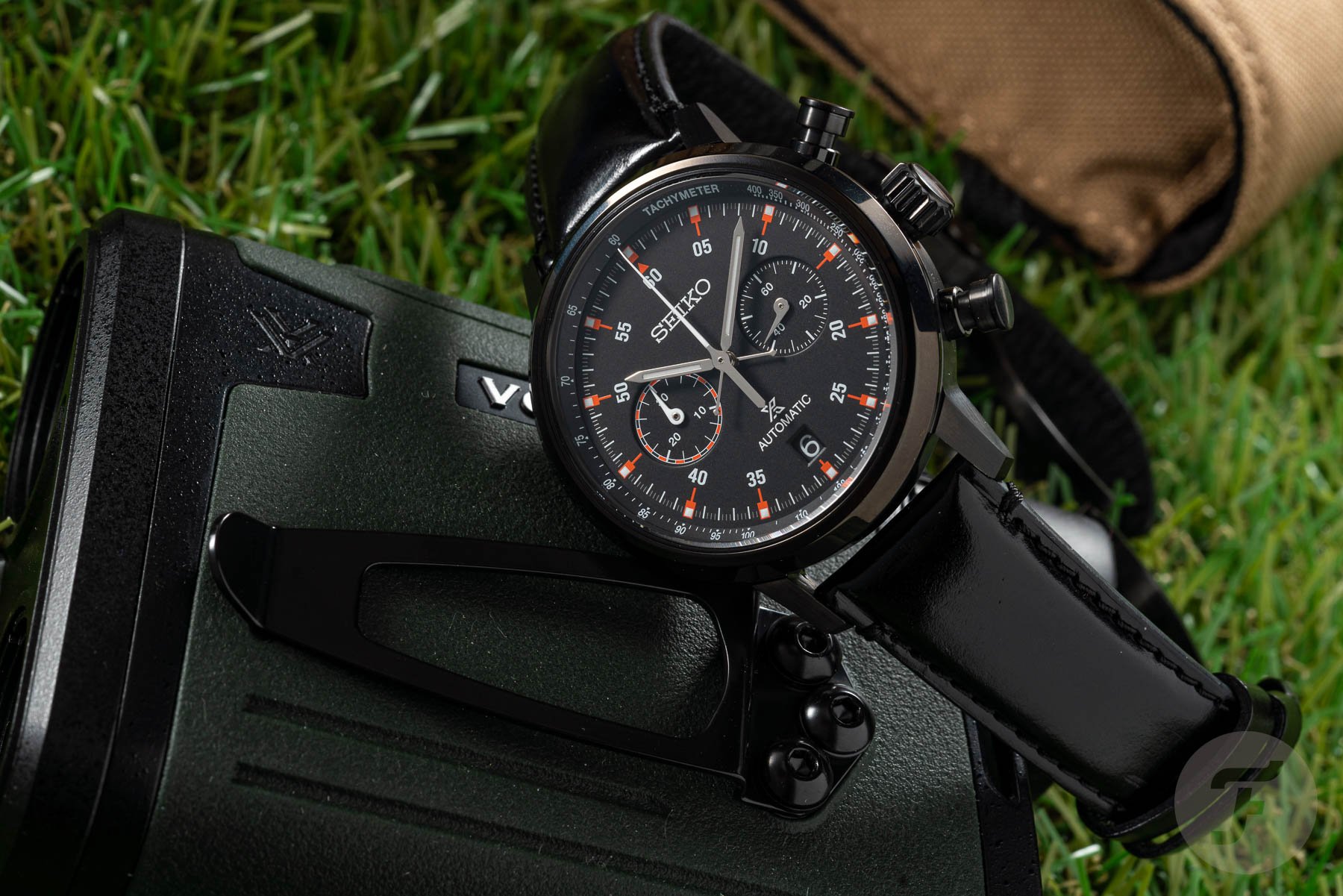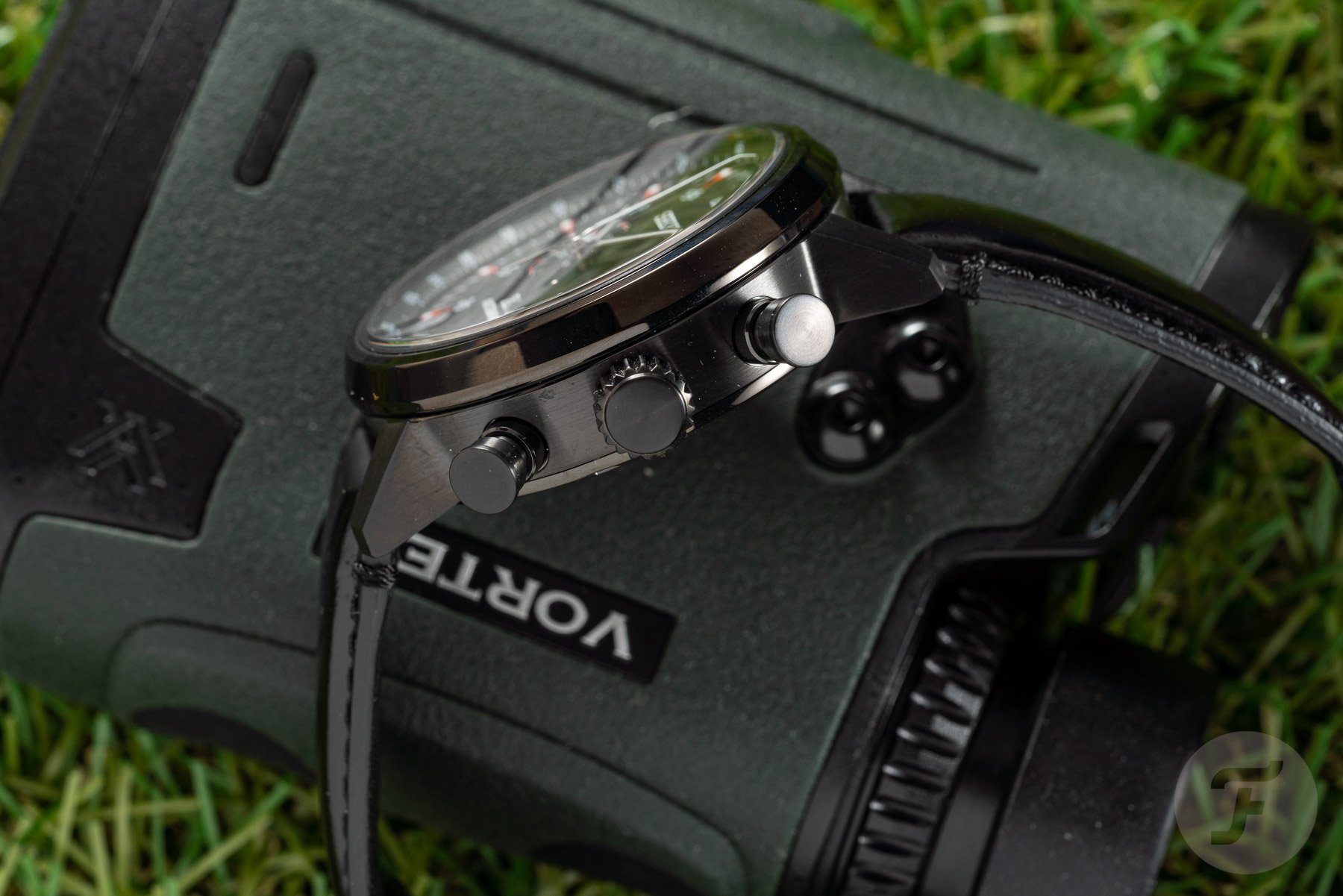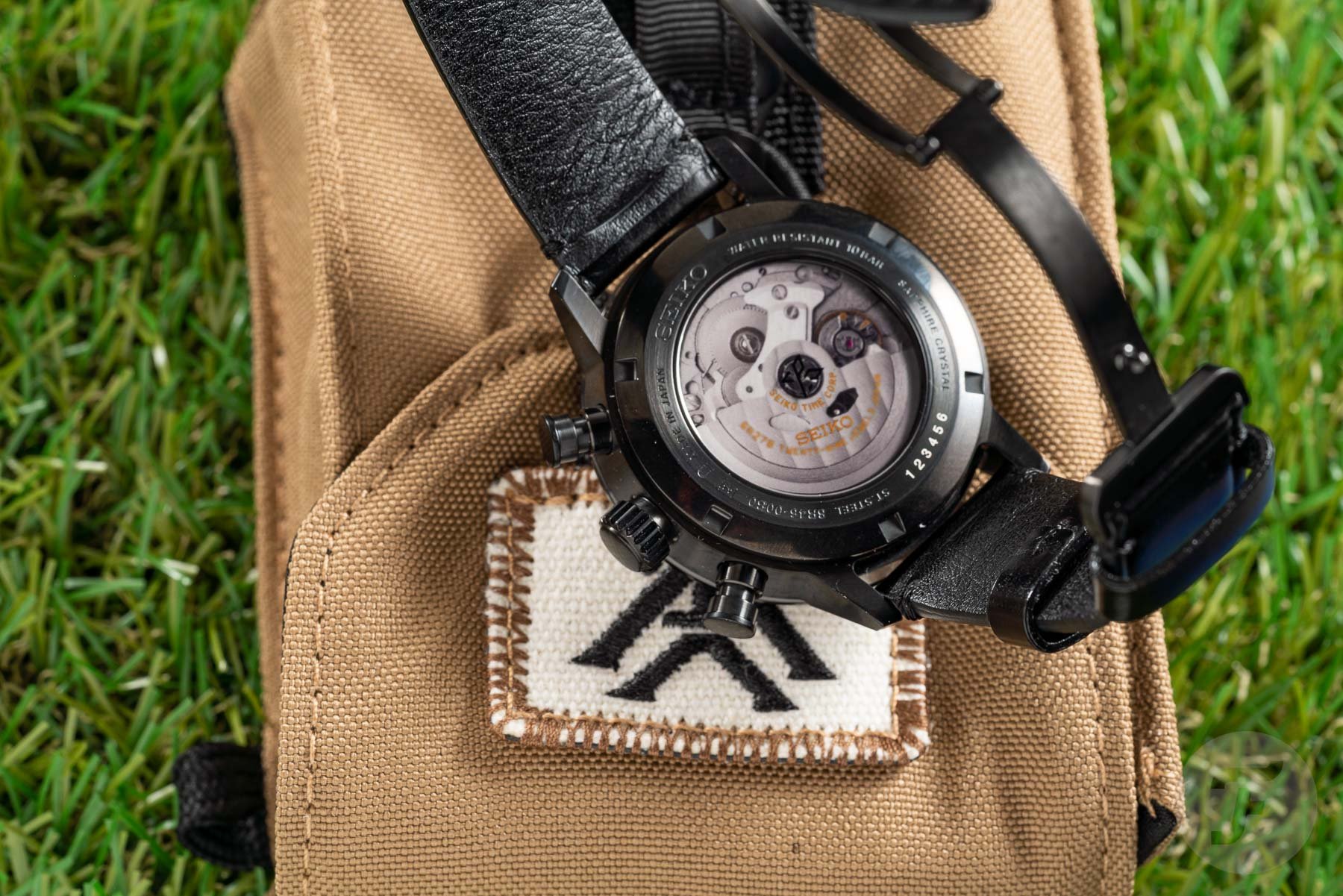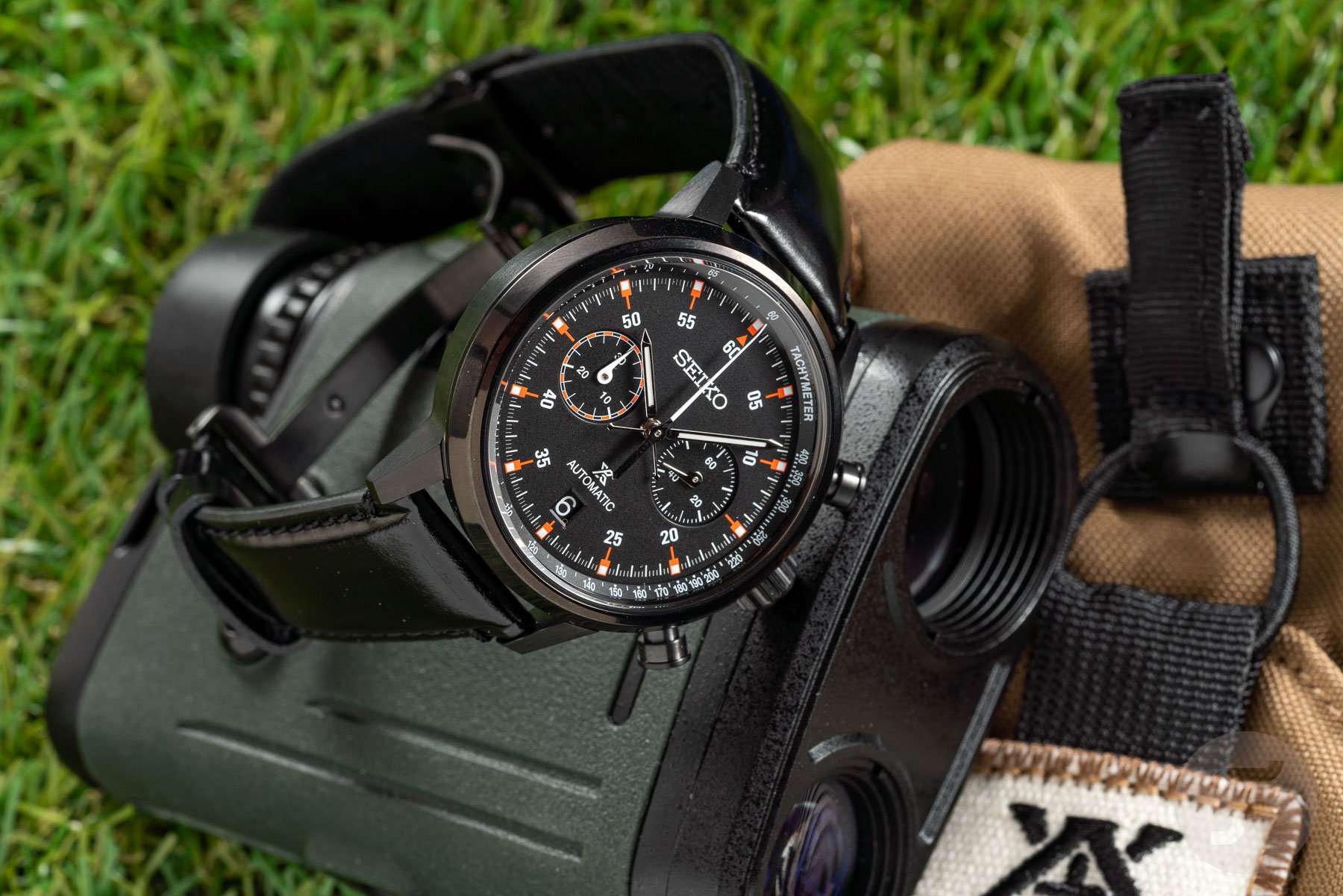Introducing The Limited Seiko Prospex Speedtimer Mechanical Chronograph SRQ045J1
I’ll be honest with you from the get-go: completely black watches aren’t my thing. But the story behind the new all-black Seiko Prospex Speedtimer Mechanical Chronograph completely changed my feelings towards it. As it turns out, the design of the SRQ045J1 is based on the looks of the black stopwatches that were being used during the 1972 Winter Olympics in Sapporo, Japan. Seiko made those black to reduce reflection from snow and ice. But wait, there’s more.
During the 1964 Summer Olympics in Tokyo, Seiko used the same stopwatches from the 89ST series. At the time, however, they were executed in white. It’s interesting to note that those Olympic games were the first ones ever organized in Asia. They also marked the first time that Seiko was appointed the official timekeeper for the event. But that certainly didn’t happen because the company had such a long history in sports timekeeping. I know, I know, you probably want to know more about that new Speedtimer, but please bear with me for a minute.
How Seiko became the official timekeeper of the 1964 Tokyo Olympics
In May 1959, Seiko president Shoji Hattori heard that Tokyo was elected to organize the 1964 Summer Olympics. He quickly made arrangements to ensure that his company would also be entrusted with the official timekeeping for the first-ever Olympics in his home country. However, at that time, Omega was the official timekeeper of the Olympics. Seiko also didn’t exactly have the capabilities to time such a big and important event. Everything had to be built from scratch, and there wasn’t much time. Three years later, in September 1962, the Olympic Technical Committee came together in Belgrade to decide on the official timekeeper for the Tokyo Olympics.
Masatoshi Tohyama, Seiko’s Research Section Manager, went to that meeting. He brought with him six examples of both the 1/5th- and 1/10th-second 89ST stopwatches to convince the committee. After having tested them, the conclusion of that same committee spoke volumes: “We are not assigning official timekeeping to a Japanese manufacturer because the Olympics will be held in Tokyo, but because these are actual functional stopwatches, backed up with solid theory.” Of course, there’s a lot more behind this story, and if you’d like to know more, I can highly recommend checking out the site Plus9Time. There, you can also find a lot more information about the 89ST stopwatches. But for now, let’s get back to the release at hand.
Speedtimer inspirations
The SRQ045J1, just like the former Seiko Speedtimers, is an homage to the world’s first commercially available automatic chronograph from 1969. But other than the name, the SRQ models don’t have much in common with the first Seiko 5 Sports Speed-Timer. The design and shape of the watches often take inspiration from something else. Just look at last year’s SRQ043 and SRQ041, for example.
In the case of this release, the inspiration comes from the black 89ST stopwatches used at the 1972 Sapporo Winter Olympics. And that’s exactly why the 42.5mm case is black, as is the matte sandblasted dial, apart from its orange and white accents.
The limited-edition Speedtimer measures 15.1mm thick. That includes both the double-domed sapphire crystal on the front and the transparent case back. But that thickness is also necessary to house the 8R46 automatic chronograph movement. It features the running seconds on a sub-dial at 3 o’clock, and there’s a date at 6 o’clock. And it offers the capability to record elapsed time of up to 30 minutes in a second sub-dial at 9 o’clock. Furthermore, the movement has a power reserve of 45 hours, and the hard-coated case is water-resistant to 100 meters. The latter is nice, especially considering the non-screw-down pushers. Finally, the SRQ045J1 comes with a black calfskin strap on a black folding buckle as well as a black hard-coated stainless steel bracelet.
Price and availability
The Seiko Prospex Speedtimer Mechanical Chronograph SRQ045J1 will be available as of February 2023 and will cost €3,000. Seiko will limit production to 600 pieces worldwide, so if you’re in the market for one, keep that in mind.
As I said before, I won’t be jumping on this one because of its all-black appearance. Nevertheless, I’m glad it has taught me a little bit more about how Seiko became the official timekeeper for the Olympics. I think it’s the kind of story that is worth celebrating for diehard fans of the brand. What do you think of the all-black SRQ045J1 and its backstory? Let me know in the comments below.
You can also find and follow me on Instagram: @fliptheparrot

